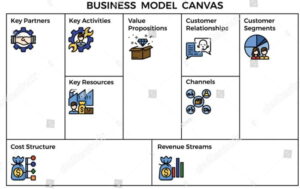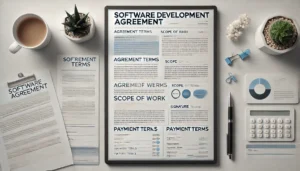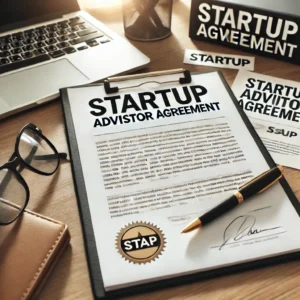Validating your startup idea is among the most important actions you need to take before moving forward. Ironically, most entrepreneurs (including many of the ones I’ve advised to in my capacity as a startup lawyer or business mentor) do a ton of stuff to advance their startup, all without first doing any validation. So, if you’re reading this, and assuming you make it until the end [of this post, not the startup lifecycle :-)], then you’re already 10 steps ahead of other entrepreneurs – well done!
In this post (which does not fully cover the topic), I’ll give you a quick practical example of how the validation process should be done.
Super summary for busy people (skip this paragraph if you plan to read the whole post): validating your startup idea is the process in which you confirm that: (1) there is in fact a need for your idea, (2) people are willing to pay for it, and (3) the price that they’re willing to pay justifies dedicating about 2-5 years of your life working on your startup. The “How”: (1) share your idea with as many people as possible (without actually telling them it’s your idea – see why below) and/or run an anonymous survey; (2) create a landing page / demo page / mockups and advertise the service/product to see: how many people click the ad and how many of those convert to ‘paying’ customers (click the “buy” button). Based on the data from the above process, you can then make an informed decision: continue working on your startup, pivot (change direction) or go back to your day job.
What is Idea Validation?
Idea Validation is the process in which you confirm that your idea (service or product) is a valid idea. Meaning that your target customers are willing to pay the price that you’re asking for, and that that price (minus expenses) will generate enough profits to make dedicating the next 2-5 years of your life (or more) working on your startup worth it.
Why is Idea Validation so Important?
Idea validation is one of the most important actions that you can take in the beginning of your startup journey. I’ve seen hundreds of entrepreneurs spend months of work and hundreds or thousands of Dollars working on their startup, only to discover [after the initial launch] that (1) people aren’t interested in their product/service and/or (2) they’re not willing to pay the requested price, and/or (3) they are willing to pay, but the sale price (minus expenses) doesn’t justify all of your hard work. Hence, instead of discovering all of the above only after putting in all that time and effort (= frustration), why not avoid it by validating your idea earlier on.
Now you might think that not validating a startup is something that only unsophisticated people do, but you’d be surprised to hear that this is very common, including among many of the founders of well-known companies. A famous example is the founders of Instagram (originally named “Bourbon”). It is said that after the initial launch (a result of months of development and a lot of features), they realized that people weren’t using most of the features, and were mainly using the pictures feature. So they went back to the drawing board, disposed of most of the features and focused on the pictures feature. This is something that they could have checked during validation, thus saving months of hard work and valuable time.
What’s So Great About Validating My Idea?
Validating your idea allows you in a relatively quick and inexpensive way to confirm the need for your product or service. The emphasis here is on quick and inexpensive. The basic concept here (taken from the Lean Startup Methodology) is that if you’re going to fail, then it’s better to fail fast and ‘fail cheap’ rather than failing after you’ve spent a lot of time and money.
How to Validate Your Idea
So we know validating is important, and we know that the aim is to see if people will pay for your service, how much they’ll pay, and what it takes (and costs) to drive them to your landing page and then make their decision to purchase the service. The question now is HOW do we do this.
Let’s imagine that your idea is like Airbnb but for swimming pools, meaning that people who have private swimming pools can rent them out (and yes, there is a startup doing this already).
1. Step one (not compulsory): step one involves one or both of the below actions (depends how thorough you want to be). Step (A) would be the minimum.
(A) Share your idea with as many people as possible, and ask them for the feedback. Now this might seem obvious, but here’s the secret: most people who do this do it wrong! Imagine I come up to you, and show you my new born baby and say: “Hey, what do you think about my baby?”. Now let’s agree that everyone knows this is the ugliest baby ever born, what would you answer? Unless you’re a cold hearted bastard (sorry), you would probably say something like: “Aww, he’s gorgeous!” – right? In the startup world this is known as the “Ugly Baby Syndrome” and what it means is that when people go and present their startup ideas, they’re usually all excited and it goes something like this: “Hey, I wanted to share this amazing idea that I have with you. I’ve quit my job to pursue it and have been working on it days and nights for the last 8 months. The idea is this: bla bla bla. So what do you think?”. Now obviously, as I explained, the idea in this case is the baby, and no normal person is going to say anything bad because they understand that it will crush your heart. So, instead of giving you the truth, they’re going to keep boosting you ego (at least about the idea) which only do you more harm. — “Ok, so what the hell should I do?” – I’m glad that you asked. When you present your idea to people, you need to do 2 things: (1) distance yourself from the idea a bit, and (2) allow room for criticism/honest feedback. It would go something like this: “Hey. My friend Jake wants me to join his startup, I think the ideas not so great, but I wanted to get your opinion.” This way, they aren’t afraid to tell you the truth because it’s not your startup and because you’ve already said yourself that you don’t think it’s great.
(B) Create a Business Model Canvas (BMC) – this is sort of a mini version of a business plan (but for startups) which is sketched by using 9 subjects (‘building blocks’ – see below image). This is something that can be done on one page, but if you want to go into more detail, 2-5 would be best. Although doing a the BMC is not crucial for doing the validation process, it will help you (1) in the long run, and (2) you will better understand who your target customers are (which are not always who you initially think they are) – these two points will help you create a better validation process.
Here’s a video which uses the Nespresso business model to show you how the BMC works:
2. Step Two: create a mini website. Once you’re clear on what your service/product is and who your target customers are, you’ll be creating kind of a showroom for it (if it doesn’t require a lot of work, you could create a very basic version of your product/service (this is sometimes referred to as a Proof of Concept (POC) or a Minimal Viable Product (MVP)).
For online service or products sold online: setup a basic landing page or profile website using one of the free website/landing page creators such as Wix, WordPress, Weebly etc. [note: some of you might be thinking: “what? Create a website? That’s like 10 or 30 hours of work!”. The truth is that you can create a fairly nice Wix website in a matter of minutes. In my “Entrepreneurship 101” course I give students 15 minutes to create a basic website, and almost all of them manage to create one.]. Using the above tools, you can create the website/landing page for free, or for up to $50 (per month) if you need specific features.
For Mobile Apps: if your service is a mobile app, and you want to show it in a way that looks like an app, another option is to create something called a Wireframe, or Mockup or Clickable Prototype (“CP”). This is a visual version of the app without it actually working (kind of like a shiny car without an engine inside). You’re basically creating images of the future App, and these images change each time you click a button, thus showing the flow of how the app would work. You can do this using tools such as Balsamiq or Proto.io and others (free for initial use and after that you need to pay). See here a list of 15 Wireframe online tools.
* Let’s call the mockup/landing page and website – ‘Website’.
Important notes for this stage:
- On the Website you created, it is important that you don’t forget to include the price of the service, and allow people to complete their signup/order (YES, even if your service doesn’t exist yet or isn’t fully operational! See below about what happens when they place their order). The main reason for creating the Website is to check how many potential customers will click the “buy”, “sign up” or “download” button, so without enabling them to do this, there is no point in creating the Website.
- It is important that your Website clearly explains what the service does. Have you ever noticed how you land on a website and after spending 2-3 minutes there still have no idea what the company does? This is unfortunately a problem that both big and small companies have and it sucks! I always say: if you can’t explain your idea/business concept in 30 seconds to your grandma or your 12 year old nephew, then your explanation is too complicated).
- It is wise to write “Alpha Version” or “Pilot Version” somewhere at the top and bottom of your website. This helps make the potential customers more understanding because they know that you are just starting out and might still be testing the waters.
3. Step Three: mini marketing. Assuming that you’ve determined your target market/customers in the previous stages, create a mini marketing campaign to bring people to your Website. This can be anywhere from $50 – $500 – all depending on how you do your marketing (which platforms), the field that you’re in (and the competitors), and other factors. The main point during this step is to learn and understand the following:
- Are people clicking on your ads, and how many of them? This gives you the click through rate which helps you understand how much you’ll need to spend on advertising in the future to get each paying customer.
- How much is each click costing you and how much is the overall campaign costing you?
- How many people (out of those who clicked the ad and reached your website) decided to buy your product / service – meaning decided to signup/click the buy button? (it is very important that you are able to track how many people did in fact click this button! Without being able to do so you will not be able to understand the results of the validation process).
- How much are they willing to pay? You can check this by having 2-3 different Websites / landing pages with the same information, but different prices. Alternatively, you can have just one Website and just change the price (but it is crucial that you wait at least 1 week between campaigns).
But what happens if someone does click the “buy”/”signup”/”register” button? My product/service doesn’t yet exist/isn’t ready for delivery? Good question! Once someone clicks the “buy” button, you show them a message that says something like:
“Wow, we’re so excited that you’re interested in our product/service! Thanks!
Unfortunately we’re currently in Alpha/pilot testing mode and have limited our signups to the first 100/1000 people – which we’ve just hit.
Please leave your details and we promise to notify you when we have more products / when more people can sign up, but to also give you a 10% discount on our service”
This is kind of what Clubhouse did with the “invite only” concept. Just make sure that under this message you have a contact form so that people can leave their details.
A Few Last Important Points to Remember.
- The sooner you validate your product, the better!
- The version of the Website that you are validating needs to be representative (as similar as possible) of the end product that you plan to sell, or else the validation process will be less reliable.
- Don’t spend months or thousands of Dollars on the validation process. Think light, lean, quick…Launch something, market it, reach conclusions, make adjustments, market again, make adjustments, analyze the data and then reach the relevant conclusions.
- It is important that the person sees the price of the product/service BEFORE they click the buy/sign-up button – otherwise the results will not be accurate (there is a big difference between the people who click the “buy” button versus those who actually take out their credit cards and complete the purchase (think of it: have you ever tried to buy something online but eventually left it in the checkout cart? You have haven’t you ???? ).
- In order to rule out external factors like an unattractive landing page or advertising campaign, and assuming you have the time, create multiple landing pages / advertising campaigns, with different designs.
- During the above process, don’t forget to check how much it costs you for each potential customer who clicks the “buy” button. If, for example, each click on your ad/banner costs you $2, and 1 out of 10 people who click the ad actually “buy” the product, then that means each sale is costing you $20. You then need to check what your average profit is per sale, and then you’ll know if your service/product is worth pursuing. Obviously this is a simplification of the calculation seeing how there are additional factors such as return customers, referrals, improving your conversion rate etc.. In any case, you will get a good estimate/validation of the idea/business). [Note: the average conversion rate for online sales is between 0.5%-5% (normally around 1%) depending on your industry].
Well done for trying to create your own startup! Don’t forget to enjoy the journey! If you liked this post, please share it with your friends or link to it. Feel free to contact us!




